|
WWII USMC M-1 Camouflaged Helmet -
The M-1 steel pot helmet is one of the most utilitarian designs produced for a U.S. helmet and one of the
longest lasting. Many news reels and pictures show the GI's using their helmet to cook, dig, carry water
and many other functions.
This helmet might be one of the most recognizable icons of WWII. Approximatelly 8 million helmets were produced
during WWII by a large number of companies.
The design of the helmet consisted of a steel outer shell with a separate fiber glass inner shell, known
as the liner. The outer shell came with a fixed canvis chin strap while the liner had a lighter duty,
removable brown leather chin strap.
The M-1 helmet was introduced in 1941. The early versions of the helmet had a fixed bail. later on
the armed forces figrued out that the failure rate in such design was greater because the force
exerted on the bail when the soldier was runing was too much and would cause the bail to break.
The swivel bail was introduced to solve the proble. This design had a hinging mechanism that allowed
the bail to move as forces were applied, reliving the stress on the weld spot.
The edge of the helmet has a fold that runs the entire perimeter. This feature covers any sharp edges left
after the manufacturing process, protecting the soldier from getting cut. The placed where the start and end
of the fold meet forms a seam. The WWII helmets had the seam in the front. Later war helmets and post war
examples had the seam in the back.
| 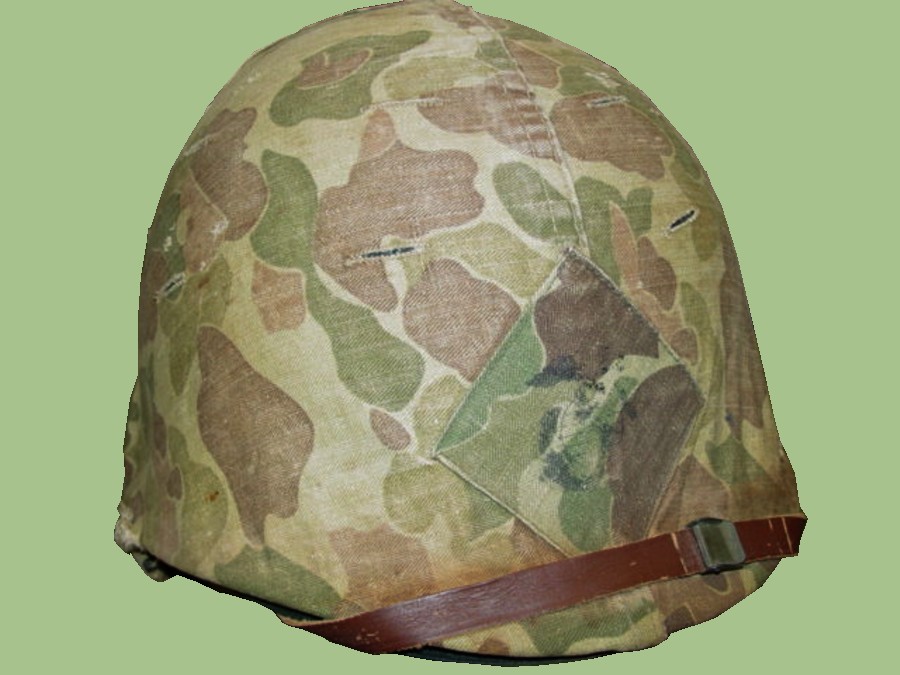
| 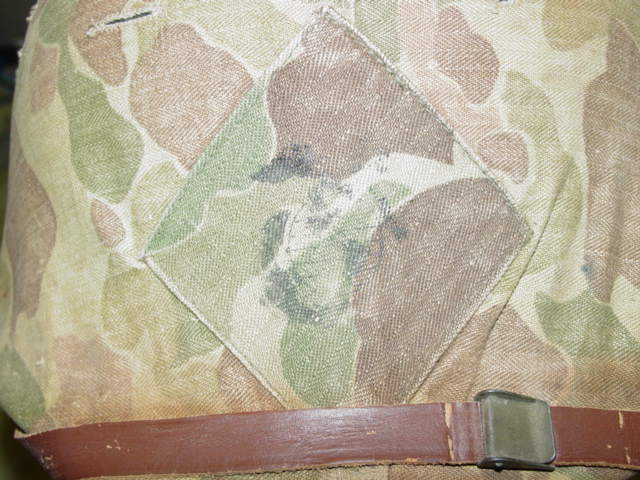
|
This page is a recognition and identification guide for US hats and helmets. Multiple
detailed photos of a specific sample are provided. Descriptions point out clearly defined
points that should be noted.
One of the most commonly asked questions is "How much is my US headgear worth?".
A price guide is included here to address this question. The value of the hats and helmets
is reviewed over a period of several years. A trend can be observed. The present worth
of US militaria in the collector's market is illustrated.
This service is provided free of charge to the visitor/enthusiast courtesy of
MilitaryItems.com,
a company dedicated to the preservation of military history and to providing quality military
antiques and collectibles to museums, institutions and the general public.
|
|
| 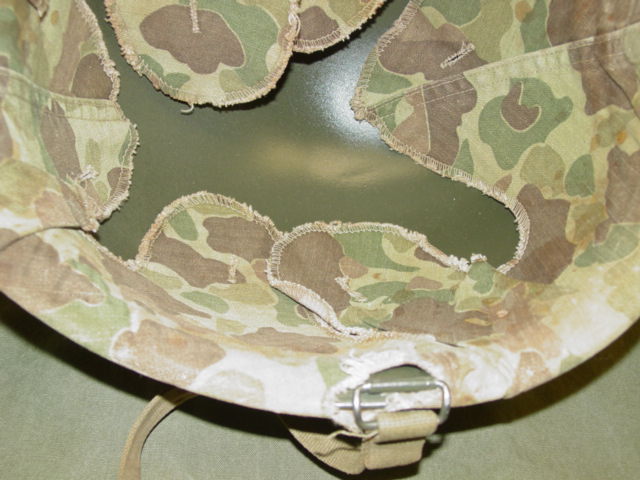
The US Marines fought primarily in the South Pacific during WWII. The vegetation was thick with brush and
jungles. The Marines needed to better blend with their surroundings. The answer to the problem resulted
in the invention of the camouflage uniform. Shirt, pants, hats and a cover for the M-1 helmet was
designed.
The cover was made of HBT material. A comoufage pattern was applied to it. One side was done in green
tones while the other was done in browns. the cover had a series of large fingers that are tucked inside
the shell before putting the liner. slits are cut into the body of the cover. They were employed as a
means to secure foliage to the helmet for additional concealment.
The stencil of an EGA has been applied to the front. This may have been done after the war. Most of the
covers in WWII did not have any markings.
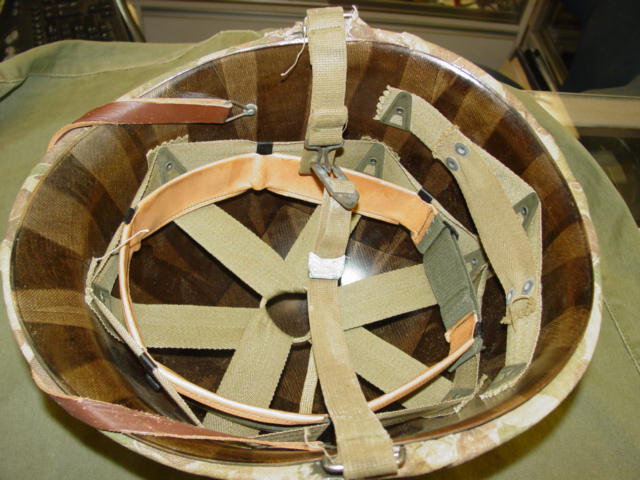
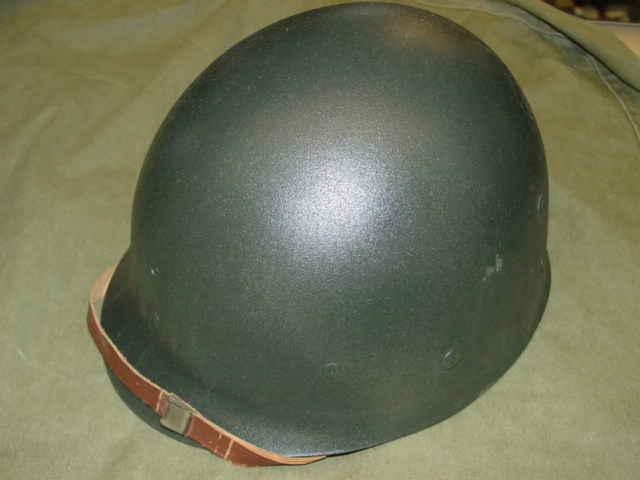
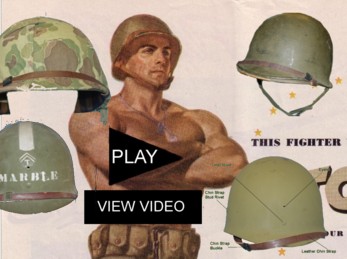
|
The "Military minute" is a series of instructional videos created by MilitaryItems.com for the purpose of
providing basic information about military collectibles. The idea is to expose people to the exciting
world of military collectibles.
The video presentation coupled with detailed photographs and written information, including a military
collectible's price guide, enhances the visitor's experience.
Whether you are a long time collector, a beginner or simply have an interest in the history and value of
each collectible, we hope that you find the information presented here useful.
|
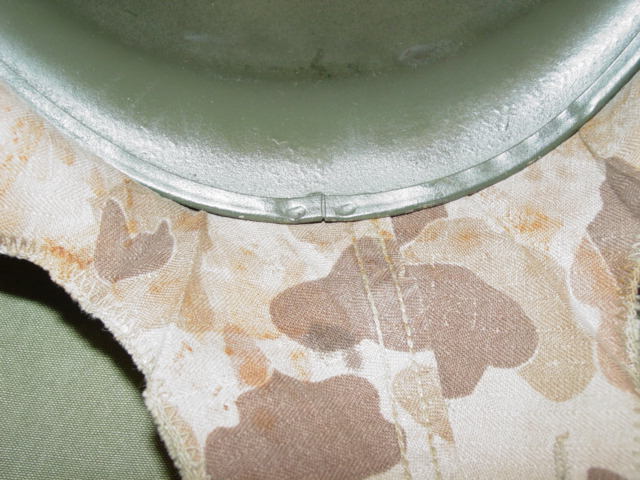

|
US headgear in general is currently being
reproduced.
It is becoming more difficult to be able to tell the fake ones from the real ones because
the quality of the reproductions is improving. The collector must become familiarized with
the construction style and materials employed in the manufacturing of this headgear.
Attention to the details is critical in order to be able to determine the authenticity of
the collectible.
If you have an interest is seeing other American military headgear, you can do so by
going to our US Military headgear
identification guide. Where we cover Army, Navy, Army Air Force and other organizations.
|





